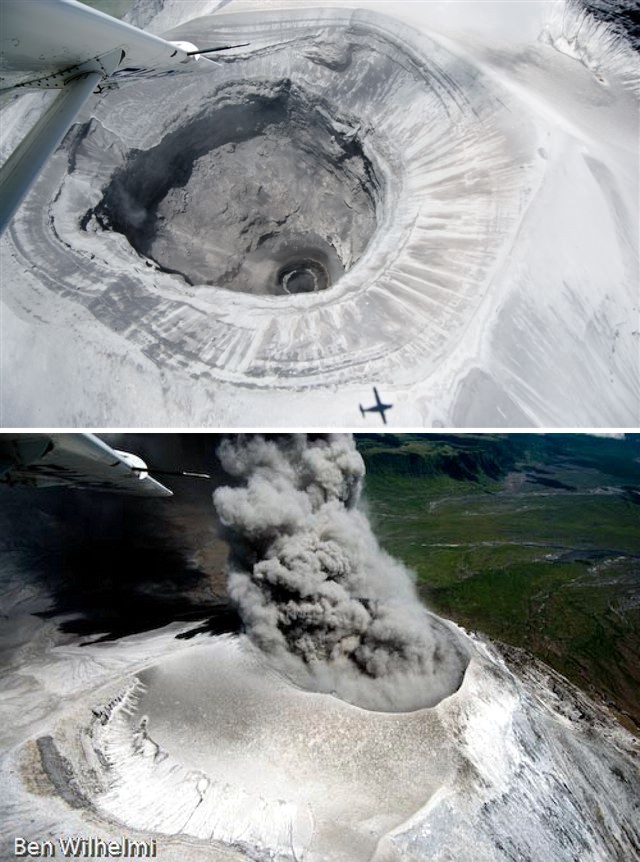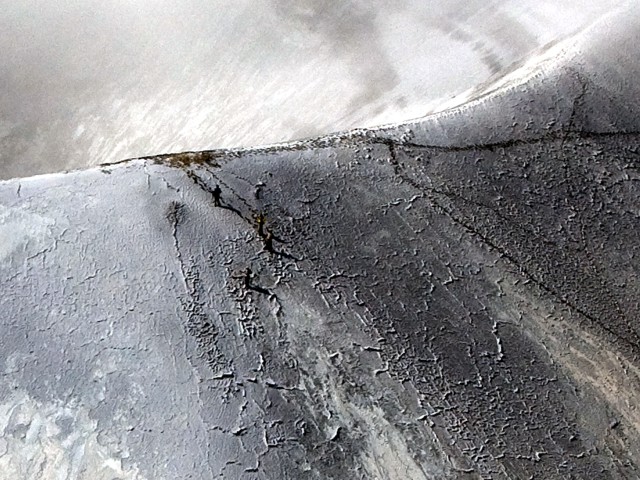Report on Ol Doinyo Lengai (Tanzania) — June 2008
Bulletin of the Global Volcanism Network, vol. 33, no. 6 (June 2008)
Managing Editor: Richard Wunderman.
Ol Doinyo Lengai (Tanzania) Explosive eruptions continue into June 2008
Please cite this report as:
Global Volcanism Program, 2008. Report on Ol Doinyo Lengai (Tanzania) (Wunderman, R., ed.). Bulletin of the Global Volcanism Network, 33:6. Smithsonian Institution. https://doi.org/10.5479/si.GVP.BGVN200806-222120
Ol Doinyo Lengai
Tanzania
2.764°S, 35.914°E; summit elev. 2962 m
All times are local (unless otherwise noted)
According to government authorities in the Ngorongoro district of Tanzania and the 22 March 2008 edition of Arusha Times, nine months after the mountain began continuous eruptive activity (BGVN 33:02), many residents had moved to other villages at a safe distance. Ngorongoro district member of parliament Saning'o Ole Telele told reporters that up to 5,000 people may have moved out of the area. The last major eruption was in August 1966. Since then there had not been an eruption of such magnitude, although notable ones were recorded in 1983, 1993, 2002 and 2006.
Recent observations. Table 19 lists recent observations from April through early July 2008.
On 2 April 2008, Chris Daborn of Tropical Veterinary Services Ltd reported that the color of ash plumes changed from "salty" white to a more inert black, and eruptions were much smaller, barely rising above the mountain. Heavy rains made movement in the area difficult, washing away ash.
Table 19. Summary of visitors to Ol Doinyo Lengai and their brief observations (from a climb, aerial overflight, flank, or satellite) April-early July 2008 (continued from BGVN 33:02). Most of this list is courtesy of Frederick Belton.
| Date | Observer | Observation Location | Brief Observations |
| 02 Apr 2008 | Chris Daborn | Flank? | See text. |
| 03 Apr 2008 | Jurgis Klaudius | Satellite | MODIS thermal anomaly data from N crater indicated that eruptions continued (see table 20). |
| 07-08 Apr 2008 | Ben Wilhelmi | Aerial | See text. |
| early Apr 2008 | Ben Wilhelmi, Michael Dalton-Smith | Aerial | See text. |
| 17 Apr 2008 | Matthieu Kervyn | Satellite | MODIS/MODLEN data indicated a significant hotspot on Lengai on 17 April, showing that activity, although intermittent, continued (see text). |
| 14-16 May 2008 | Chris Weber, Marc Szeglat | Climb | See text. |
| 03, 10, 12 Jun 2008 | Ben Wilhelmi | Aerial | No activity observed. |
| 08 Jun 2008 | Ben Wilhelmi | Aerial | Ash eruption. |
| 12 Jun 2008 | Fred Belton | Aerial? | Ash-poor plume above Lengai ~1500 m. |
| 17 Jun 2008 | Local Masaai from Engare Sero village | Climb | Climbed Lengai via the W route through the Pearly Gates (closed to climbers for several months due to dangerous activity). |
| 18 Jun 2008 | Fred Belton, Paul Hloben, Paul Mongi, Mweena Hosa, Peter (Masaai guide) | Climb | See text. |
| 18 Jun 2008 | Ben Wilhelmi | Aerial | See text. |
| 19 Jun 2008 | Ben Wilhelmi | Aerial | No activity observed. |
| 30 Jun 2008 | Ben Wilhelmi | Aerial | Gray plumes emerging from crater. |
| 01 Jul 2008 | Ben Wilhelmi | Aerial | Small collapse of the S part of the new crater rim. |
Ben Wilhelmi flew over on 7 and 8 April 2008 just prior to an eruption on the 7th and following the start of an eruption on the 8th. The flanks showed newly formed erosion gullies in the recently deposited ash (figure 111). Pilots Wilhelmi and Michael Dalton-Smith observed little activity during early April, although visibility was hampered by atmospheric clouds on several occasions; aerial photos showed no activity on 11 April.
 |
Figure 111. Aerial photographs of Ol Doinyo Lengai crater on (a, top) 7 April and (b, bottom) 8 April 2008. Photos courtesy Ben Wilhelmi. |
On 14-16 May 2008, Chris Weber and Marc Szeglat visited. Weber noted that only minor ash eruptions were reported by local Masaai after the eruptions on 8 and 17 April 2008. Some of the evacuated Masaai had returned to their settlements, but part of the livestock had not returned by the middle of May. The fall-out of pyroclastics was still visible around the volcano. Due to a heavy rain season, vegetation damage was not as severe as it could have been. Up to an altitude of ~ 1,000 m the vegetation (mostly 'Elephant grass', normal grass, and some Akazia trees) was undamaged except for the W side, where severe damage occurred as far as 10 km from the summit. Some lahars had occurred on the N and NE sides. The former trekking route was not recommended because of rockfalls and poor conditions. Weber and Szeglat used a very steep route on the SE side (named "simba route"). From ~ 1,000 m altitude ash layers were clearly visible on the ground, but new grass had grown since the eruption. Above ~ 1,500 m on the SE flank all vegetation was covered by pyroclastic material. From an altitude of ~ 2,500 m, additional impacts of volcanic bombs were visible. In the inactive S crater, at their campsite, all vegetation was destroyed, and volcanic bomb impacts from the explosive events on April 2008 were quite impressive.
The active N crater had a new morphology (figure 112). The N-S diameter of the crater was 300 m and it was 283 m E-W. The crater floor was at ~ 2,740 m elevation, ~ 130 m deep below the W crater rim. Two vents, designated as c1 and c2, were present inside the crater (figure 112). Both vents were strongly degassing. On 15 May 2008, fine powdered ash was ejected until midday. It was not possible to determine which vent was responsible for this. After descent, Weber and Szeglat visited an abandoned Masaai boma (hut) a few kilometers W of the summit where ashfall had forced a family to flee.
On 8 June Wilhelmi saw a small eruption during a flyover. Photos made by Wilhelmi during overflights on 3, 10, and 12 June showed no activity. However, an ash-poor plume was seen by Fred Belton on 12 June.
On 17 June 2008 a group of Masaai from Engare Sero climbed via the W route through the Pearly Gates, which has been closed for several months. Fred Belton and Paul Hloben climbed on 18 June with a Masaai guide, Peter, and two other Tanzanians Paul Mongi and Mweena Hosa, following the route of the group from the previous day, which was covered by thick ash deposits. The route is subject to danger should there be a significant eruption. Belton's group spent about an hour on the rim of the active cone.
The new active cone covered the former crater floor entirely except for a region just N of the summit. The W, N, and E sides of the former crater were ~ 30 m higher than before and enclosed a deep pit crater with a couple of small vents. To the S, the rim of the new cone rested on the crater floor. To the E and W the new cone merged with and covered up the old rim at the points where it intersects the arc formed by the summit ridge. Thus, there was a section of the former crater floor which was bounded to the N by the new cone's S rim and to the E, S, and W by the original curving summit ridge.
From approximately 0920-1020 the pit crater frequently emitted an ash-poor plume from the SW part of its floor, and there was light ashfall on the rim. Loud rumbling was continuous and occasional sounds of gas jetting and rockfalls were heard amid other noises. Occasionally there was a sloshing/hissing noise resembling the sound of 'lava at depth' often heard in the past, but there was no evidence of lava in the crater. The summit and S crater were not visited due to atmospheric clouds around the summit.
On 18 June, Ben Wilhelmi photographed the climbers with Belton during a flyover (figure 113). No activity was seen the next day, but on 30 June Wilhelmi saw gray plumes emerging. A small crater rim collapse was seen on the S part of the crater wall on 1 July 2008.
 |
Figure 113. View of the crater rim on 18 June 2008 showing four climbers at left center just below the rim. Photo courtesy of Ben Wilhelmi. |
Satellite thermal anomalies. Table 20 lists MODIS/MODVOLC thermal anomalies measured between November 2007 through July 2008; MODVOLC is the algorithm for identifying thermal anomalies used by the HIGP Thermal Alerts System Group. On 17 April 2008, as noted in table 19, MODIS data analyzed by Matthieu Kervyn's algorithm MODLEN (sensitive to lower temperature anomalies than MODVOLC) indicated a significant hotspot, showing that activity, although intermittent, continued.
Table 20. MODVOLC thermal anomalies measured by MODIS satellite at Ol Doinyo Lengai from November 2007 through July 2008. Courtesy of the MODIS Thermal Alerts System Group at the Hawai'i Institute of Geophysics and Planetology (HIGP).
| Date | Time (UTC) | Number of pixels | Satellite |
| 17 Nov 2007 | 2000 | 2 | Terra |
| 31 Nov 2007 | 2310 | 1 | Aqua |
| 30 Dec 2007 | 0815 | 1 | Terra |
| 08 Jan 2008 | 2030 | 2 | Terra |
| 17 Jan 2008 | 2025 | 2 | Terra |
| 17 Feb 2008 | 2240 | 3 | Aqua |
| 22 Feb 2008 | 2300 | 1 | Aqua |
| 28 Feb 2008 | 1135 | 1 | Aqua |
| 29 Feb 2008 | 2305 | 1 | Aqua |
| 07 Mar 2008 | 2310 | 1 | Aqua |
| 10 Mar 2008 | 2045 | 4 | Terra |
| 03 Apr 2008 | 1955 | 1 | Terra |
Geological Summary. The symmetrical Ol Doinyo Lengai is the only volcano known to have erupted carbonatite tephras and lavas in historical time. The prominent stratovolcano, known to the Maasai as "The Mountain of God," rises abruptly above the broad plain south of Lake Natron in the Gregory Rift Valley. The cone-building stage ended about 15,000 years ago and was followed by periodic ejection of natrocarbonatitic and nephelinite tephra during the Holocene. Historical eruptions have consisted of smaller tephra ejections and emission of numerous natrocarbonatitic lava flows on the floor of the summit crater and occasionally down the upper flanks. The depth and morphology of the northern crater have changed dramatically during the course of historical eruptions, ranging from steep crater walls about 200 m deep in the mid-20th century to shallow platforms mostly filling the crater. Long-term lava effusion in the summit crater beginning in 1983 had by the turn of the century mostly filled the northern crater; by late 1998 lava had begun overflowing the crater rim.
Information Contacts: Frederick Belton, Developmental Studies Department, PO Box 16, Middle Tennessee State University, Murfreesboro, TN 37132, USA (URL: http://oldoinyolengai.pbworks.com/); Christoph Weber, Volcano Expeditions International (VEI), Muehlweg 11, 74199, Entergruppenbach, Germany (URL: http://www.volcanic-hazards.de/); Hawai'i Institute of Geophysics and Planetology (HIGP) Thermal Alerts System, School of Ocean and Earth Science and Technology (SOEST), Univ. of Hawai'i, 2525 Correa Road, Honolulu, HI 96822, USA (URL: http://modis.higp.hawaii.edu/); Matthieu Kervyn De Meerendre, Dept of Geology and Soil Science, Gent University, Krijgslaan 281, S8/A.310, B-9000 Ghent, Belgium (URL: http://homepages.vub.ac.be/~makervyn/).


